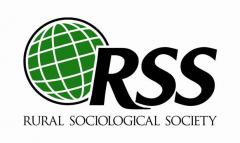How the RSS Began
(From pages 43-45 in Julie N. Zimmerman. 2015. “I Could Tell Stories ‘til the Cows Come Home: Individual Biography meets Collective Biography.” Pp. 35-62 in Johannes Hans Bakker (ed) Rural Sociologists at Work: Candid Accounts of Theory, Methods and Practice. Routledge.)
How the Rural Sociological Society Began
“In the years leading up to forming the RSS, rural sociology had been growing. In response, the Rural Sociology section of the [American Sociological Association (ASA)] was established in 1921 (the first section formed in the ASA) and in 1936 the section began publishing its own journal-Rural Sociology (Holik and Hassinger 1986b; 1987a).24 However, even though having a section provided a mechanism for rural sociologists to formally organize and the journal increased publication opportunities, it did not resolve other limitations associated with the ASA.”25
“Although the idea of forming an autonomous professional organization had been discussed before, at the annual conference in December 1936, a formal committee was finally created. Referred to as the “Sanderson Committee,” the group was charged to officially consider the possibility. The majority of the committee was reluctant to make the move and separate from the ASA, including Dwight Sanderson and Carl Taylor. Later referred to as the “Big Boys” (Collard 1984:329), both Sanderson and Taylor had close connections with the ASA and both went on to become president of the ASA.”
“However, a new generation was growing within rural sociology one that had a different vision and a different viewpoint about staying with the ASA.26 O. D. Duncan was the youngest on the Sanderson Committee and he had long favored separation. Realizing that he was the only committee member holding that opinion, he solicited the assistance of T. Lynn Smith at Louisiana State University (LSU). Smith organized a memorandum of support from the faculty at LSU and sent it not only to members of the Sanderson Committee, but also to other leaders within the rural group. With this support, O. D. Duncan drafted a minority report.”27
“At the following year's conference in December 1937, both the majority and minority reports from the Sanderson Committee were presented. While the majority report wanted to pursue constitutional amendments with the ASA so that the group could remain a part of the larger organization, the minority report read in part:
… that this group here and now declare itself to be an independent society and that as an organization its allegiance to the American Sociological Society in all matters of jurisdiction shall be regarded by this action as having come to an end (Rural Sociological Society of America 1938:124).”
“Decades later, Sewell (who was there) described “the shock of the old guys” and how “[M]uch to everybody's surprise… practically everybody there was in favor of Duncan's report” (Fuguitt 2009:35; 30). In the end, and after much debate, it was the minority report that won out and the Rural Sociological Society of America was born.28 Many years later, Duncan looked back on the events as outgoing president of the RSS. Reflecting his well-known flourish for language (Fuguitt 2009:34), Duncan wrote:
It is always young men who win the crucial issues. Old men may declare that war and dictate the terms of peace, but young men fight, and young men die for the causes in which they believe. Sometimes they win. December 28, 1937, was a day of victory for young men (1953:412).”
Footnotes
25. The ASA restricted section members to only one conference presentation. This meant that if a person presented a paper in the Section on Rural Sociology (or any other section), they were not allowed to present a paper in any of the general sessions or in another sections' sessions. Another issue was that the ASA required all members of sections to first be members of the larger society. As a result, nonsociologists or those with few interests in the larger academic discipline of sociology had no mechanism through which to join the rural group (e.g. Collard 1984:327).
26. “Youngest” is a relative term. As Sewell described in his interview, professional culture at the time was marked by more deference and young referred more to time in a post Ph. D. professional position than to chronological age (Fuguitt 2009:33).
27. A copy of the original letters and correspondence are available in “Establishing the Rural Sociological Society” (Zimmerman 2012a).
28. In order to allow time for Sanderson to determine if the RSS could remain within the ASA while also being an independent organization, the RSS began its first year as the Rural Sociological Society of America with a provisional constitution and bylaws (Rural Sociological Society of America 1938). Sanderson presented his proposed amendment to the ASA Executive Committee (and it was twice published to the ASA membership). In the end, the question was shunted to the ASA Committee on Regional Societies. Eventually, in 1942, the ASA constitution was changed and the RSS was given representation on the ASA Executive Committee (Holik and Hassinger 1987a:13-16). To see copies of some of the original documents, see “Establishing the Rural Sociological Society'' (Zimmerman 2012a).
References
Duncan, Otis Durant. 1953. “A Communication from the Retiring President. “Rural Sociology 18(4):412.
Zimmerman, Julie N. 2012a. "The American Sociological Society's Section on Rural Sociology," "Creating the Journal: Rural Sociology," and "Establishing the Rural Sociological Society." Rural Sociological Society (RSS). July 2012. [Copies are available from the RSS Historian or the Archives of the Rural Sociological Society.]

